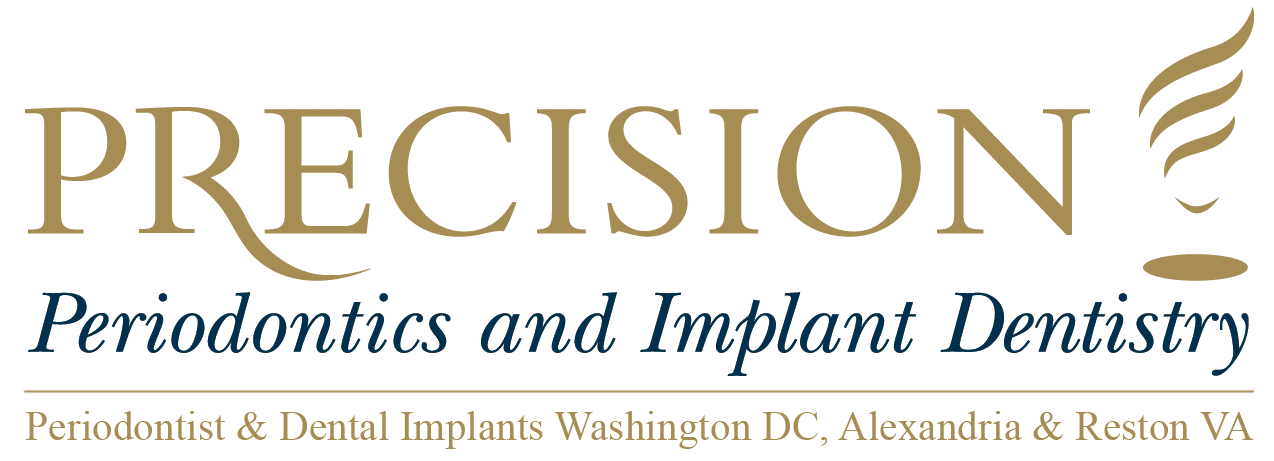Abscesses of the Periodontium
Abscesses of the periodontium are localized abscesses, or collections of pus, within the periodontal tissues. Periodontal abscesses occur next to teeth, and they differ from periapical abscesses, which are more common, in that they are related to living teeth; periapical abscesses indicate the spread of infection, specifically, from a dead tooth. These abscesses are acute bacterial infections found in the tissue of the periodontium.
The primary symptom of a periodontal abscess is deep, throbbing pain, usually sudden in onset, that is exacerbated by biting on the tooth that is adjacent to the abscess. This tooth may feel elevated or particularly prominent, or it may be mobile, if the abscess has played a part in the destruction of the alveolar bone and the periodontal ligament. The tissue that covers a periodontal abscess in its early stages appears red and swollen and is painful to the touch. The surface may appear stretched and shiny, because of the swelling of the abscess. Before pus is present in the abscess, there is no discharge associated with the periodontal abscess, though the proximal lymph nodes may be swollen.
As pus forms in the periodontal abscess, the pain and pressure increase, until eventually the periodontal abscess spontaneously drains. At this point, the pain and pressure of the abscess are relieved, though patients report a foul taste and smell in the mouth as pus drains into the oral cavity. The pus usually drains into the mouth through a periodontal pocket; if the pus does not drain, the infection may spread and develop into cellulitis or an infection of the tooth and its surrounding tissues.
Abscesses of the periodontium commonly present as complications of advanced periodontal disease. When bacteria invade periodontal pockets, an inflammatory response occurs. If these bacteria are allowed to multiply and find their way into the soft tissues of the oral mucosa, a purulent abscess may form. Normally, these infection processes are regulated by the immune system; when the resistance of the host decreases, the immune system attempts to isolate the infection by forming a pocket of abscess. Abscess may also arise if the opening of a periodontal pocket is blocked for any reason. This may happen if the periodontal pocket has become very deep and has plaque and tartar trapped inside, or it may happen if food debris becomes trapped in a periodontal pocket. Infection may also form if a periodontal pocket is scaled incorrectly or incompletely, trapping the bacteria that remains in the periodontal pocket. Rarely, a gingival retraction cord may be accidentally left in place following treatment, which can also cause a periodontal abscess.
Bacteria may also enter the periodontal pocket if the gingiva is accidentally punctured while cleaning the teeth or eating, which can lead to abscess, and trauma to the gingival tissue due to impact or pressure may also cause periodontal abscess. Perforation of gingival tissue during an endodontic procedure, like a root canal, can also lead to periodontal abscess. In rare cases, occlusal overload, or excessive pressure applied while biting, can lead to periodontal abscess. Certain systemic immune factors may also predispose certain people to periodontal abscess formation.
It can be challenging to diagnose periodontal abscesses, especially in trying to differentiate them from periapical abscesses. Treatment for the two types of abscess is different, so it is an important distinction to determine. There are four main types or periodontal abscesses. Gingival abscesses are localized infections involving only the gum tissue near the marginal gingiva. Periodontal abscesses are localized but involve a greater dimension of the gum tissue and extend toward the root of the adjacent tooth. Pericoronal abscesses are localized to the gum tissue that surrounds the crown of a partially or fully erupted tooth; these abscesses are usually associated with the wisdom teeth. There are also abscesses that combine the periodontium and dental pulp.
Initial treatment for a periodontal abscess focuses on infection control and pain management. If the pus has not spontaneously drained, it is manually drained, which provides relief from pain and begins to control infection. Gentle massage can encourage further drainage. Antibiotics may be prescribed, and the underlying symptoms of periodontal disease are addressed.
